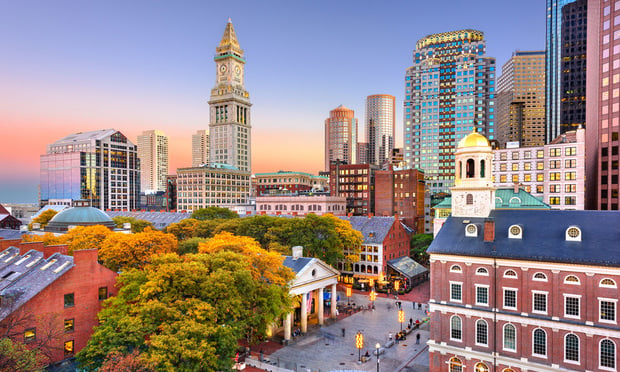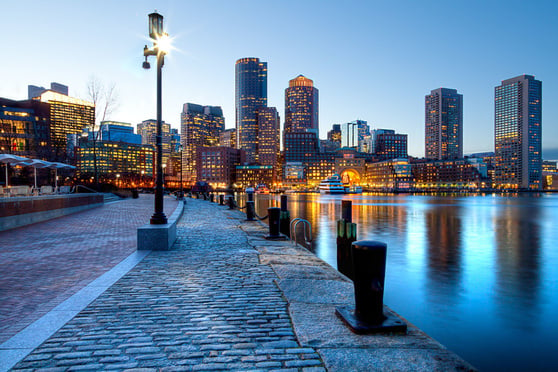BOSTON—Whether a business must be in Boston or it can conduct operations effectively in the outlying suburbs, one thing is for certain, both can expect to see higher rents in 2016.
A combination of strong demand and limited availability of prime office space is contributing to upward pressure on rents in prime locations in Boston, Cambridge and even the surrounding suburbs, according to Cushman & Wakefield.
Ashley Lane, vice president of research for C&W, says there are a host of reasons why rents are in the rise in the region. "In Downtown Boston there is a lot of sales activity so landlords need to underwrite higher rents, in the suburbs you have a lot of new product so obviously rents are more expensive in new buildings and in Cambridge there is no space, so it is just the law of supply and demand," she says.
Lane adds that she expects rents to continue to rise in 2016 in Greater Boston. "Rents are going crazy and they don't show any sign of abatement," she says.
The Cushman fourth quarter office report for the Boston region also states that office demand is strong and shows no sign of let-up. In fact, C&W states that WeWork, the co-working office space provider, is close to signing a 90,000-square-foot lease deal in the Back Bay district. Lane refused comment on the location of WeWork's pending lease deal. If finalized, the new lease would increase WeWork's presence in Boston to approximately 300,000 square feet.
In downtown Boston, the year ended with just over 1.0 million square feet of positive absorption. The delivery of PwC's new 440,00-square-foot building at 101 Seaport Boulevard was a significant driver. C&W states that a majority of the office leasing in Boston was focused at class A Financial District buildings in 2015. The overall vacancy rate for Boston was 7.4% at year's-end, which was down from more than 8% a year ago.
The direct weighted average rent in the Financial District was $48.81-per-square-foot, with some properties asking $85-a-square-foot. The overall direct-weighted average rent for Boston stood at $47.32-a-square-foot at year's end, according to C&W.
The price of class B office space soared nearly 30% in the past year in Greater Boston. Class B space in the Back Bay was up 32% (to $44.70-per-square-foot); in the Financial District Class B space rose 23% (to $41.75-per-square-foot); while Class B office space in the Government Center/North Station increased 30% (to $42.21-per-square-foot) while South Station Class B space shot up 17% (to $29.21-per-square-foot).
Vacancies for lab and office space stood at a miniscule 1.8% and 5.1% respectively in Cambridge. Office rents are up 10%-15% across all submarkets, while rents for lab space rose 5% in 2015. The direct weighted average rent for lab/office space in Cambridge was $56.99-a-square-foot at the end of 2015.
Rents in the suburbs are rising as well, particularly in the 128 Central region. Year-over-year, the suburban office market has seen a 10.1% increase to $31.55-per-square-foot. In Waltham, 13 properties totaling 1.38 million square feet of space traded in 2015.
C&W believes that suburban rents will continue to rise in 2016 as tenant demand remains strong for properties such as CityPoint and 1265 Main St. in Waltham. In May of last year shoe retailer Clarks Americas, Inc. announced it would lease a new 120,000-square-foot building at 1265 Main St.
Lane adds that another sign of continued strength and confidence in the Greater Boston market is the increasing amount of speculative development taking place. Lane says there are speculative ventures in the pipeline or under construction at the Seaport, 128 Central, and in the inner suburbs in Watertown.
© 2024 ALM Global, LLC, All Rights Reserved. Request academic re-use from www.copyright.com. All other uses, submit a request to [email protected]. For more information visit Asset & Logo Licensing.








